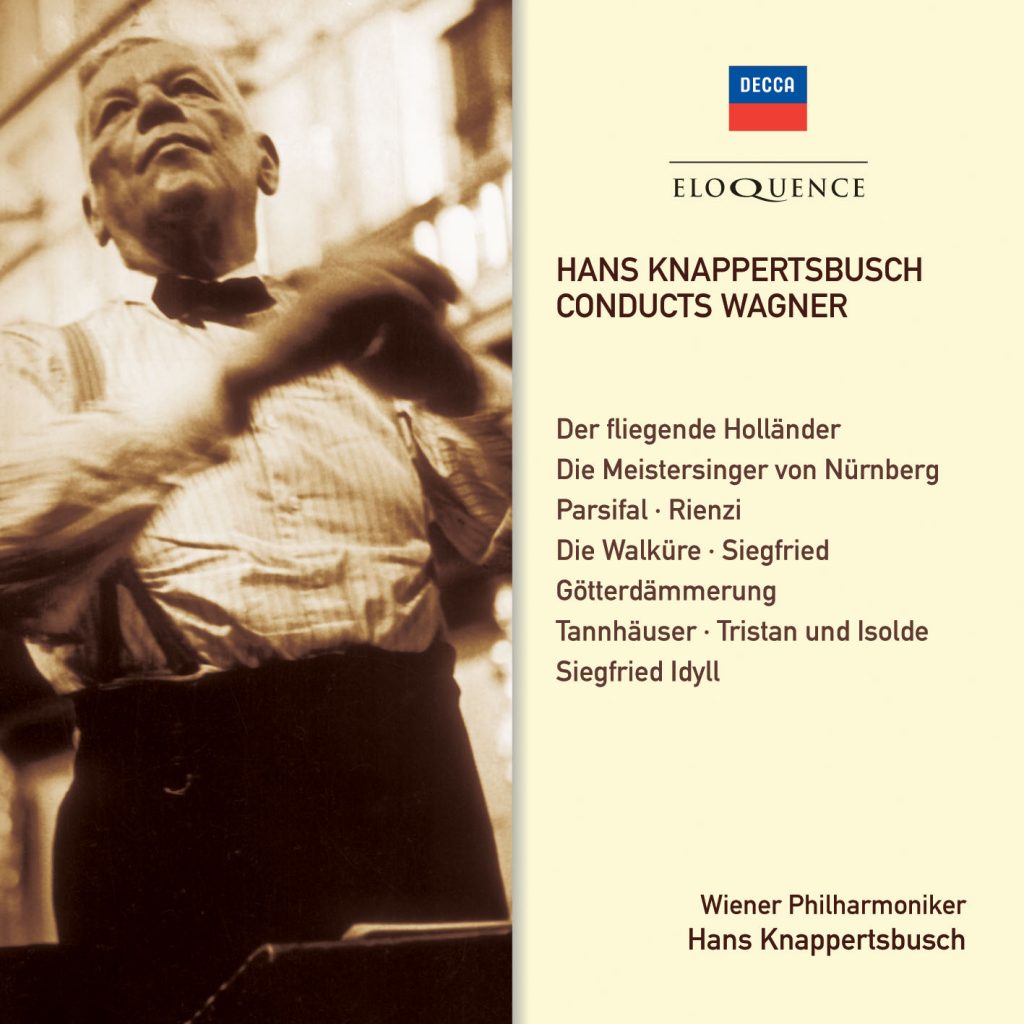‘It’s Wagner’s opera: let’s present him and not ourselves!’ This remark by Hans Knappertsbusch to Hans Hotter as the singer was about go on stage as Gurnemanz at Bayreuth in 1964, was characteristic of the conductor’s attitude. Singers’ egos, directors’ concepts and designers’ flights of fancy had no place in the Knappertsbusch vision of Wagner’s stage works. Indeed, after his second season at ‘New Bayreuth’, he told Wieland Wagner: ‘As soon as the spirit of Richard Wagner moves back into the Festspielhaus, I shall be the first to return’. And yet it would be hard to find a more flexible and spontaneous exponent of the conductor’s art than Hans Knappertsbusch, or ‘Kna’ as his friends and colleagues called him. No two of his performances were alike which made him a difficult conductor to ‘capture’ in the clinical environment of the recording studio. He was notoriously averse to rehearsals, preferring to take inspiration from the moment when everything came together in the crucible of a live performance in the theatre or concert hall. Frequently the result was magnificent as this collection testifies.
This collection brings together the bulk of his Wagner orchestral recordings for Decca (with the Wiener Philharmoniker) with scenes from Parsifal with members of the Wiener Staatsopernchor and the ‘Forest Murmurs’ from ‘Siegfried’ with Franz Lechleitner in the title role – in all, more than two-and-a-half hours of music recorded for Decca between 1950 and 1959. Australian Wagner scholar, Peter Bassett, contributes the illuminating notes for this release.
Knappertsbusch died in October 1965 in Munich, following a fall at his home. In a long musical life, he explored the works of the great classical composers with intelligence and imagination; but as he himself said, it was to Wagner’s music dramas that he devoted ‘his most and his deepest’.
RICHARD WAGNER
CD1
Parsifal:
Prelude to Act I
Transformation Scene
Flower Maidens’ Scene
Günther Treptow
Wiener Staatsopernchor
Siegfried: Idyll
Tristan und Isolde: Prelude to Act I
Tannhäuser: Overture and Venusberg Music
CD2
Der fliegende Holländer: Overture
Rienzi: Overture
Die Meistersinger von Nürnberg:
Prelude to Act I
Prelude to Act III
Die Walküre: Ride of the Valkyries
Siegfried: Forest Murmurs
Franz Lechleitner
Götterdämmerung:
Dawn and Siegfried’s Rhine Journey
Siegfried’s Funeral March
Wiener Philharmoniker
Hans Knappertsbusch
Recording Producers: Victor Olof (Parsifal, Tannhäuser, Der fliegende Holländer, Rienzi, Die Meistersinger, Die Walküre, Siegfried); Victor Olof, Peter Andry (Siegfried Idyll); John Culshaw (Tristan und Isolde); Peter Andry (Götterdämmerung)
Balance Engineers: Cyril Windebank (Parsifal, Siegfried Idyll, Tannhäuser, Der fliegende Holländer, Rienzi, Die Meistersinger, Die Walküre, Siegfried); James Brown (Tristan und Isolde, Götterdämmerung)
Recording Locations: Groβer Saal, Musikverein, Vienna, Austria, 14–15 and 24 June 1950 (Parsifal Prelude, Rienzi), 23 June 1950 (Parsifal Transformation), 11 September 1950 (Parsifal Act II), 1 April 1955 (Siegfried Idyll), 6–7 May 1953 (Tannhäuser, Der fliegende Holländer, Die Walküre), September 1951 (Die Meistersinger), 24 June 1950 (Siegfried); Sofiensaal, Vienna, Austria, September 1959 (Tristan und Isolde), 3–6 June 1956 (Götterdämmerung)
‘I must praise the mellow quality of the brass … and the lovely cantabile of the strings, and above all the way in which, without exaggeration, Knappertsbusch captures the mystical mood of the Prelude. … The voices are placed in excellent perspective and Günther Treptow makes a good Parsifal.’ (Parsifal) Gramophone
‘He always allows Wagner’s music to unroll at its own natural pace, never forces or drives it. One hears details that one had never noticed in the score. And when it comes to a climax, then none can rival Knappertsbusch’s magnicently rich, resonant, clear, spacious recording, which has the incidental advantages of demonstrating superb orchestral playing and Wagner conducting as fine as one can hope to hear … Nothing seems to get lost in those massive climaxes’ (Tannhäuser, Fliegende Holländer, Walküre) Gramophone
‘… the ‘Götterdämmerung’ excerpts are most beautifully played with an abundant degree of warmth and a moderate degree of savagery where these qualities are called for … the beauty of sound […] is incontestable’ Gramophone
‘the glorious playing of the Vienna Philharmonic’ (Tristan) Gramophone

